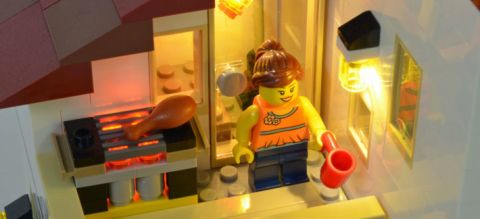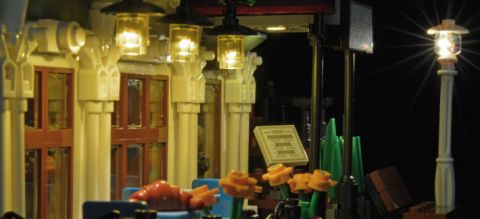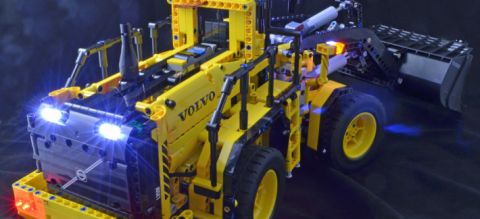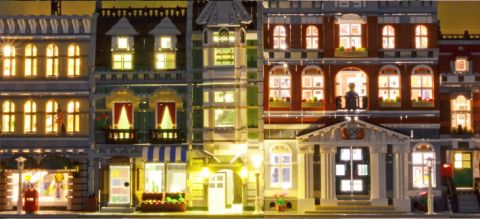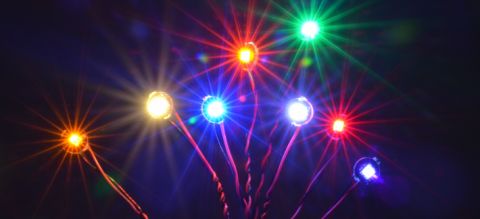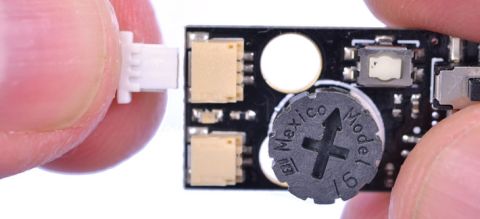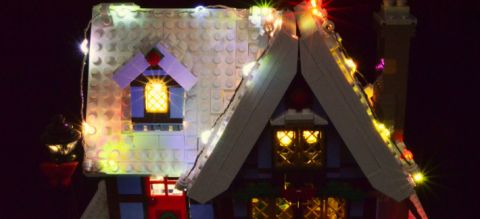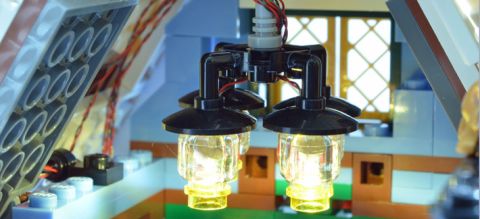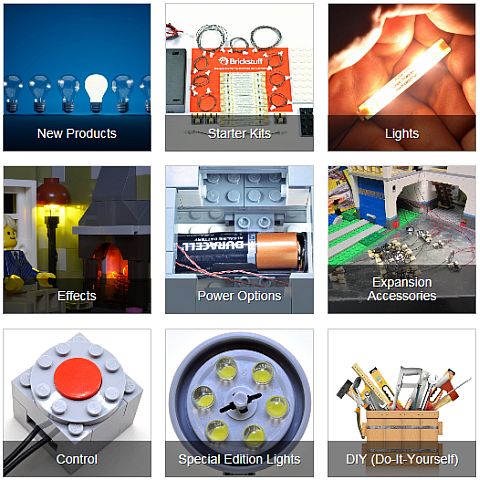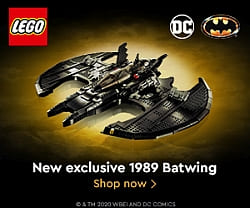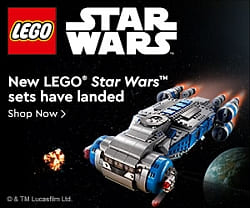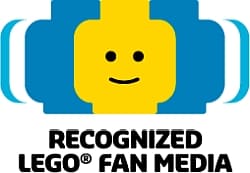(Written by William)
This is one of the toughest LEGO Collectible Minifigure series to feel for through the packaging. Which is primarily due to the fact that so many of the minifigs in the series come with nothing more than a generic 2×2 tile as their accessory. This means you may have to spend more time using the process of elimination – feeling for what’s not there – instead of trying to identify the accessories. So let’s being our search! 🙂
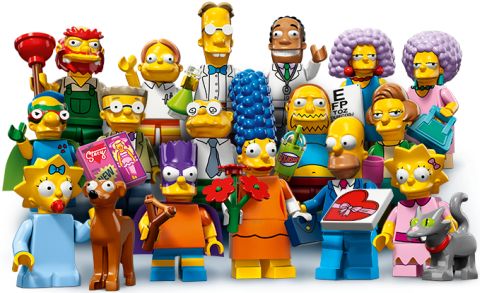
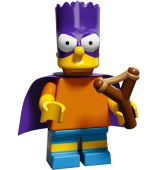 ➡ LEGO The Simpsons Bart Simpson: Bart is one of the simpler minifigs to find in this series by locating the slingshot. The slingshot will feel very much like a LEGO carrot top (although a bit wider), if you are familiar with that piece, and fortunately there is not other piece in the series you can mix it up with. There are five Bart minifigs in a full box, so he is very common.
➡ LEGO The Simpsons Bart Simpson: Bart is one of the simpler minifigs to find in this series by locating the slingshot. The slingshot will feel very much like a LEGO carrot top (although a bit wider), if you are familiar with that piece, and fortunately there is not other piece in the series you can mix it up with. There are five Bart minifigs in a full box, so he is very common.
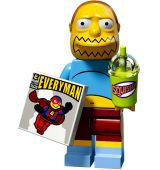 ➡ LEGO The Simpsons Comic Book Guy: This is the first minifigure with a 2×2 tile, but thankfully he also got a Squishy cup. The cup is roughly the size of a 1×1 round brick, but instead of a top stud, you will feel the bubble lid and straw – which makes it feel like a mini baby-bottle. You will need to find this cup to be able to positively identify this minifigure. There are only three Comic Book Guy minifigs in a full box, so he is one of the rarest in the bunch.
➡ LEGO The Simpsons Comic Book Guy: This is the first minifigure with a 2×2 tile, but thankfully he also got a Squishy cup. The cup is roughly the size of a 1×1 round brick, but instead of a top stud, you will feel the bubble lid and straw – which makes it feel like a mini baby-bottle. You will need to find this cup to be able to positively identify this minifigure. There are only three Comic Book Guy minifigs in a full box, so he is one of the rarest in the bunch.
 ➡ LEGO The Simpsons Dr. Hibbert: This is one of the toughest minifigs to locate in the series. He only comes with a 2×2 tile as an accessory – just like Homer and Selma. So first make sure there are no other accessories along with the tile (like a mug, 2×2 plate, or Squishy cup). Once you are sure there are none of these extra pieces, find the head. If it is massive, then that’s most likely Selma. If it is thin and tubular you either have Dr. Hibbert or Homer. You may want to create a small pile of the packages when you get to this point. This should give you a chance to compare head structures. Homer’s is smoother and rounder while Dr. Hibbert’s head has just a hint more bumps and shape. This is not a lot to go on so be prepared to take some time. There are four Dr. Hibbert minifigs in a full box, which makes him fairly common.
➡ LEGO The Simpsons Dr. Hibbert: This is one of the toughest minifigs to locate in the series. He only comes with a 2×2 tile as an accessory – just like Homer and Selma. So first make sure there are no other accessories along with the tile (like a mug, 2×2 plate, or Squishy cup). Once you are sure there are none of these extra pieces, find the head. If it is massive, then that’s most likely Selma. If it is thin and tubular you either have Dr. Hibbert or Homer. You may want to create a small pile of the packages when you get to this point. This should give you a chance to compare head structures. Homer’s is smoother and rounder while Dr. Hibbert’s head has just a hint more bumps and shape. This is not a lot to go on so be prepared to take some time. There are four Dr. Hibbert minifigs in a full box, which makes him fairly common.
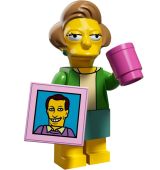 ➡ LEGO The Simpsons Edna Krabappel: Edna is another 2×2 tile holder, but fortunately she also got a standard minifigure mug. The mug has a distinct handle that should make it easy to find – just make sure you can feel the handle. The biggest problem I ran into with her is that she is quite rare, with only three Edna minifigs in a full box.
➡ LEGO The Simpsons Edna Krabappel: Edna is another 2×2 tile holder, but fortunately she also got a standard minifigure mug. The mug has a distinct handle that should make it easy to find – just make sure you can feel the handle. The biggest problem I ran into with her is that she is quite rare, with only three Edna minifigs in a full box.
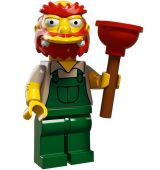 ➡ LEGO The Simpsons Groundskeeper Willie: In the case of Willie, it’s all about finding the plunger. This utensil is a bit rubbery so feeling the suction end may be troublesome, especially if it gets a bit crushed inside the packaging. Give the bulky end a squeeze. If it squishes, then you have found Willie. Besides, there is no other accessory in this series that comes with a long rod-like handle, so that should help too. There are five Willie minifigs in a full box, so he is very common.
➡ LEGO The Simpsons Groundskeeper Willie: In the case of Willie, it’s all about finding the plunger. This utensil is a bit rubbery so feeling the suction end may be troublesome, especially if it gets a bit crushed inside the packaging. Give the bulky end a squeeze. If it squishes, then you have found Willie. Besides, there is no other accessory in this series that comes with a long rod-like handle, so that should help too. There are five Willie minifigs in a full box, so he is very common.
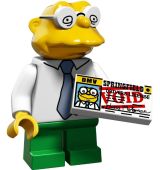 ➡ LEGO The Simpsons Hans Moleman: Because of the short legs, it would be easy to confuse him with on of the short legged kids in this series. However if you also locate the 1×2 tile, then you have definitely found Hans Moleman. There are only three Hans Moleman minifigs in a full box, so he is one of the rarest characters.
➡ LEGO The Simpsons Hans Moleman: Because of the short legs, it would be easy to confuse him with on of the short legged kids in this series. However if you also locate the 1×2 tile, then you have definitely found Hans Moleman. There are only three Hans Moleman minifigs in a full box, so he is one of the rarest characters.
 ➡ LEGO The Simpsons Homer Simpsons: Just like Dr. Hibbert, Homer is tough to identify. You take the same steps as with Dr. Hibbert, except you are looking for the smoother and rounder head opposed to the textured one belonging to Dr. Hibbert. If you have Homer from the previous series or from the LEGO The Simpsons sets, you can practice feeling for his head before you go to the store. There are five Homer minifigs in a full box, so he is one of the common ones.
➡ LEGO The Simpsons Homer Simpsons: Just like Dr. Hibbert, Homer is tough to identify. You take the same steps as with Dr. Hibbert, except you are looking for the smoother and rounder head opposed to the textured one belonging to Dr. Hibbert. If you have Homer from the previous series or from the LEGO The Simpsons sets, you can practice feeling for his head before you go to the store. There are five Homer minifigs in a full box, so he is one of the common ones.
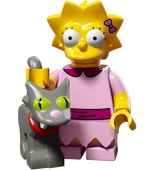 ➡ LEGO The Simpsons Lisa Simpson: With Lisa you want to find the cat. The shape of the cat is fairly distinct, and what really sets it apart from Maggie’s dog is that the tail of the cat is up. Another way to confirm if you have Lisa or Maggie is that if you think you found one of the animals see if there are also short minifig legs included in the same package. Only Lisa has both short legs and a pet. There are four Lisa minifigs in a full box, so she is fairly common.
➡ LEGO The Simpsons Lisa Simpson: With Lisa you want to find the cat. The shape of the cat is fairly distinct, and what really sets it apart from Maggie’s dog is that the tail of the cat is up. Another way to confirm if you have Lisa or Maggie is that if you think you found one of the animals see if there are also short minifig legs included in the same package. Only Lisa has both short legs and a pet. There are four Lisa minifigs in a full box, so she is fairly common.
 ➡ LEGO The Simpsons Maggie Simpson: As mentioned above, Maggie is a lot like Lisa as they both come with animals. You could look for Santa’s Little Helper (the dog), but it might be simpler to locate Maggie’s one piece body. It feels a bit longer than regular minifig torsos and kind of odd at the base because of the shaping. There are four Maggie minifigs in a full box, so she is quite common.
➡ LEGO The Simpsons Maggie Simpson: As mentioned above, Maggie is a lot like Lisa as they both come with animals. You could look for Santa’s Little Helper (the dog), but it might be simpler to locate Maggie’s one piece body. It feels a bit longer than regular minifig torsos and kind of odd at the base because of the shaping. There are four Maggie minifigs in a full box, so she is quite common.
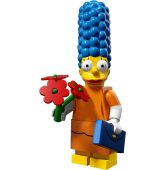 ➡ LEGO The Simpsons Marge Simpson: You have two options to find Marge. Either look for her tall head piece (which feels like a baby corn), or find the 1×2 tile and make sure the legs included are normal and not short like Hans Moleman’s (the only other minifig with a 1×2 tile). You might also run across the flowers and stem, but since they are flat and/or flexible they are not entirely ideal to feel for as the first choice. There are four Marge minifigs in a full box, so she is quite common.
➡ LEGO The Simpsons Marge Simpson: You have two options to find Marge. Either look for her tall head piece (which feels like a baby corn), or find the 1×2 tile and make sure the legs included are normal and not short like Hans Moleman’s (the only other minifig with a 1×2 tile). You might also run across the flowers and stem, but since they are flat and/or flexible they are not entirely ideal to feel for as the first choice. There are four Marge minifigs in a full box, so she is quite common.
 ➡ LEGO The Simpsons Martin: This is not a hard minifigure to identify because the book is quite distinct. Just make sure you found the book and not a tile. In my experience the book is typically closed inside the package, so it is somewhat like a tile but still have a different shape. There are only three Martin minifigs in a full box, and I have found this minifig to be one of the hardest to find.
➡ LEGO The Simpsons Martin: This is not a hard minifigure to identify because the book is quite distinct. Just make sure you found the book and not a tile. In my experience the book is typically closed inside the package, so it is somewhat like a tile but still have a different shape. There are only three Martin minifigs in a full box, and I have found this minifig to be one of the hardest to find.
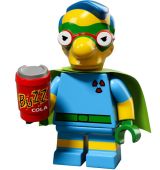 ➡ LEGO The Simpsons Millhouse: You will want to find the soda-can. It feels like a 1×1 round brick with a flat top. It feels a lot like the cup the barista had in The LEGO Movie Collectible Minifigures series, and what Apo had in The Simpsons Minifigures Series 1, or the cups next to the coffee-station in the LEGO The Simpsons Kwik-E-Mart set. Just make sure it is not the Squishy cup that feels like a baby bottle with the straw sticking out. You can confirm the difference by first finding the soda-can, then double checking to make sure that the minifig legs are the short variety to distinguish Millhouse from the Comic Book Guy. There are four Millhouse minifigs in a full box, so he is quite common.
➡ LEGO The Simpsons Millhouse: You will want to find the soda-can. It feels like a 1×1 round brick with a flat top. It feels a lot like the cup the barista had in The LEGO Movie Collectible Minifigures series, and what Apo had in The Simpsons Minifigures Series 1, or the cups next to the coffee-station in the LEGO The Simpsons Kwik-E-Mart set. Just make sure it is not the Squishy cup that feels like a baby bottle with the straw sticking out. You can confirm the difference by first finding the soda-can, then double checking to make sure that the minifig legs are the short variety to distinguish Millhouse from the Comic Book Guy. There are four Millhouse minifigs in a full box, so he is quite common.
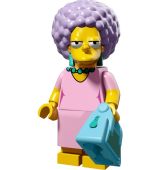 ➡ LEGO The Simpsons Patty: Finding her purse is the key to identify this minifig. It is a small square-ish shape, with a bit of texture on the sides. If you got Marge from The Simpsons Minifigures Series 1, you’ll know what it feels like. Also, if you have any LEGO Friends sets you will most likely have an example of this piece. If you think you found it the purse, try feeling for Patty’s head. It will feel like a golf ball. As long as there is no 2×2 tile, you shouldn’t mix her up with Selma. There are three Patty minifigs in a full box, so she is one of the rare ones.
➡ LEGO The Simpsons Patty: Finding her purse is the key to identify this minifig. It is a small square-ish shape, with a bit of texture on the sides. If you got Marge from The Simpsons Minifigures Series 1, you’ll know what it feels like. Also, if you have any LEGO Friends sets you will most likely have an example of this piece. If you think you found it the purse, try feeling for Patty’s head. It will feel like a golf ball. As long as there is no 2×2 tile, you shouldn’t mix her up with Selma. There are three Patty minifigs in a full box, so she is one of the rare ones.
 ➡ LEGO The Simpsons Professor Frink: Find the beaker and you’re done. The beaker has a thin neck with a fat rounded bottom so it is easy to identify and it doesn’t feel like anything else in this series. There are only three Professor Frink minifigs in a full box, so he is another one of the rarer minifigures in this series.
➡ LEGO The Simpsons Professor Frink: Find the beaker and you’re done. The beaker has a thin neck with a fat rounded bottom so it is easy to identify and it doesn’t feel like anything else in this series. There are only three Professor Frink minifigs in a full box, so he is another one of the rarer minifigures in this series.
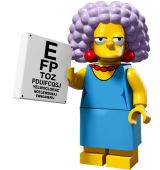 ➡ LEGO The Simpsons Selma: Like Homer and Dr. Hibbert, Selma only has a 2×2 tile as an accessory. However, if you find a massive piece that feels a bit like a lion’s mane, then you have Selma – yes, her head/hair is that distinct. There are only three Selma minifigs in a full box, so she is one of the rare ladies in this series.
➡ LEGO The Simpsons Selma: Like Homer and Dr. Hibbert, Selma only has a 2×2 tile as an accessory. However, if you find a massive piece that feels a bit like a lion’s mane, then you have Selma – yes, her head/hair is that distinct. There are only three Selma minifigs in a full box, so she is one of the rare ladies in this series.
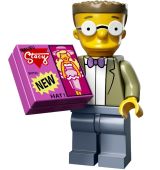 ➡ LEGO The Simpsons Smithers: This minifigure also comes with a 2×2 tile as an accessory, however in addition there is a 2×2 plate to attach to it. So if you can feel out both the tile and the plate, you have positively identified Smithers. There are four Smithers minifigs in a full box, so he is fairly common in this series.
➡ LEGO The Simpsons Smithers: This minifigure also comes with a 2×2 tile as an accessory, however in addition there is a 2×2 plate to attach to it. So if you can feel out both the tile and the plate, you have positively identified Smithers. There are four Smithers minifigs in a full box, so he is fairly common in this series.
One way to quickly identify the above mentioned parts and accessories is to first shake the baggies so that all small parts fall into one corner. This way you can identify them quickly. It is also a good idea to have a printout of the minifigures with accessories that you can look at as a reference while you are searching for the minifigs you want. You can go through a whole box of Collectible Minifigures quite quickly following these simple methods, and as a bonus you will also improve your tactile skills! 😀

Hope this helps with hunting for the LEGO Simpsons minifigures! They should be available at all LEGO retailers and are also listed at the Online LEGO Shop. If you have your own tips and tricks on identifying them feel free to share in the comment section below! 😉
And you might also like to check out the LEGO Minifigures section for more news, reviews and discussions, or choose from the following posts:



